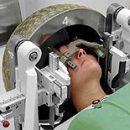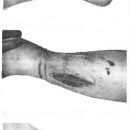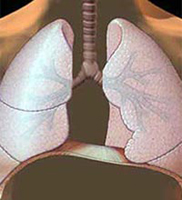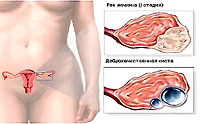Treatment of moma uterus is a very difficult problem, t.To. Despite the hormonal dependence, this tumor is very heterogeneous (heterogeneous essentially or origin).
Content
Surgery
Initially, it should be revealed unconditional testimony for surgical treatment:
- Large dimensions of myomatous modified uterus (the total value corresponds to the uterus 14 weeks of pregnancy)
- Uterine bleeding accompanied by chronic hypochromic anemia
- Fast tumor growth
- Acute nutritional violation of the Mioma (twist the feet of the subserosy node, necrosis of the tumor)
- Combination of uterine misa with recurrent or atypical endometrial hyperplasia, ovarian tumor
- Supervinement, bladder, bladder, rectum, rectum (intraligent, retrocervical mioma, node located in the preposter tissue)
- The presence of a myomatous node in the region of the tube angle of the uterus, which causes infertility
- crested and ceroys–Fresh Localization
- Non-ejection and growing mioma uterus in postmenopausal age.
The volume of surgical intervention is largely determined by the age of the patient.
 Up to 40 years in the presence of testimony for surgical treatment, if technical capabilities are allowed, produce conservative momectomy (Removal of misa with uterus preservation). It is especially advisable to remove the macroscopic myomatous nodes of medium sizes (in diameter from 2 to 5 cm) until their intensive increase in size occurred. The preferred method is laparoscopic. When solving the issue of conservative momectomy, it is necessary to take into account the morphotype of the tumor. With proliferating mioma, you can delete several nodes, but further growth continues many other growth rates. Therefore, recurrences for conservative momectomy in the morning of the uterus take place in 15-37% of cases.
Up to 40 years in the presence of testimony for surgical treatment, if technical capabilities are allowed, produce conservative momectomy (Removal of misa with uterus preservation). It is especially advisable to remove the macroscopic myomatous nodes of medium sizes (in diameter from 2 to 5 cm) until their intensive increase in size occurred. The preferred method is laparoscopic. When solving the issue of conservative momectomy, it is necessary to take into account the morphotype of the tumor. With proliferating mioma, you can delete several nodes, but further growth continues many other growth rates. Therefore, recurrences for conservative momectomy in the morning of the uterus take place in 15-37% of cases.
After 40 years and postmenopausal age in the presence of surgical testimony, the operation of removal of myomatous uterus is necessary, t.To. If myomas did not regress the postmenopause in the first 2 years, its further existence is accompanied by the danger of oncopathology (adenocarcinoma, sarcoma). Famous domestic oncologist I.IN. Bokman (1987.) It was believed that the irregularity of the uterus in the postmenopausal period is the marker of oncopathology of the reproductive system.
Conservative treatment conducted in reproductive age immediately after identifying myomatous nodes of small and medium sizes, it allows in some cases to slow down the further growth of the tumor, prevent the operation to remove the uterus, keep the ability to give birth to a child.
Indications for conservative treatment:
- Young age patient (reproductive and premanopausal)
- Small dimensions of myomatous modified uterus (up to 10–12 weeks of pregnancy)
- Intermuscular location of myomatous nodes
- relatively slow growth of myoma
- The absence of deformation of the uterine cavity (T.E. Centripetal growth and submucosal localization).
Treatment is to normalize systemic disorders characteristic of patients with uterine mioma: chronic anemia, inflammatory processes of uterus and appendages, disruption of the blood supply of the small pelvis with the predominance of venous stagnation and decrease in blood supply, violation of the functional state of the nervous system and vegetative equilibrium.
The methods for correction of systemic disorders include the following:
- Compliance with a healthy lifestyle (sleep normalization, rational nutrition, physical activity, rejection of bad habits, control over body weight);
- Normalization of sexual life;
- Periodic reception of vitamins and trace elements in winter–Spring Period (Gends, Pents, Aevit, Folic Acid);
- treatment of anemia, voluble and metabolic disorders;
- Neurotropic effects if the patient shows the features of a disharmonary personality.
If pregnancy has come, not even planned, it is necessary to preserve it, t.To. Postpartum involution of the uterus, breastfeeding of a child at least 4-6 months contribute to the change in the histogenesis of the Moma, transition to it from proliferating into a simple and in some cases to terminate its further development.
For the prevention of the inevitable removal of the uterus, with the growth of tumors, the preservation and maintenance of reproductive function is of up to 40 years.
The effectiveness of hormone therapy is very different depending on the nature of hormonal disorders, the presence and density of receptors in myomatous nodes and myometry. The latter prevail in non-eliminative momas of small sizes consisting mainly of the smooth muscle cell component. In fibromes, where the stromal component prevails, as well as in nodes of large sizes, hormonal receptors are usually absent. Therefore, hormonal therapy in these patients is little effective.









